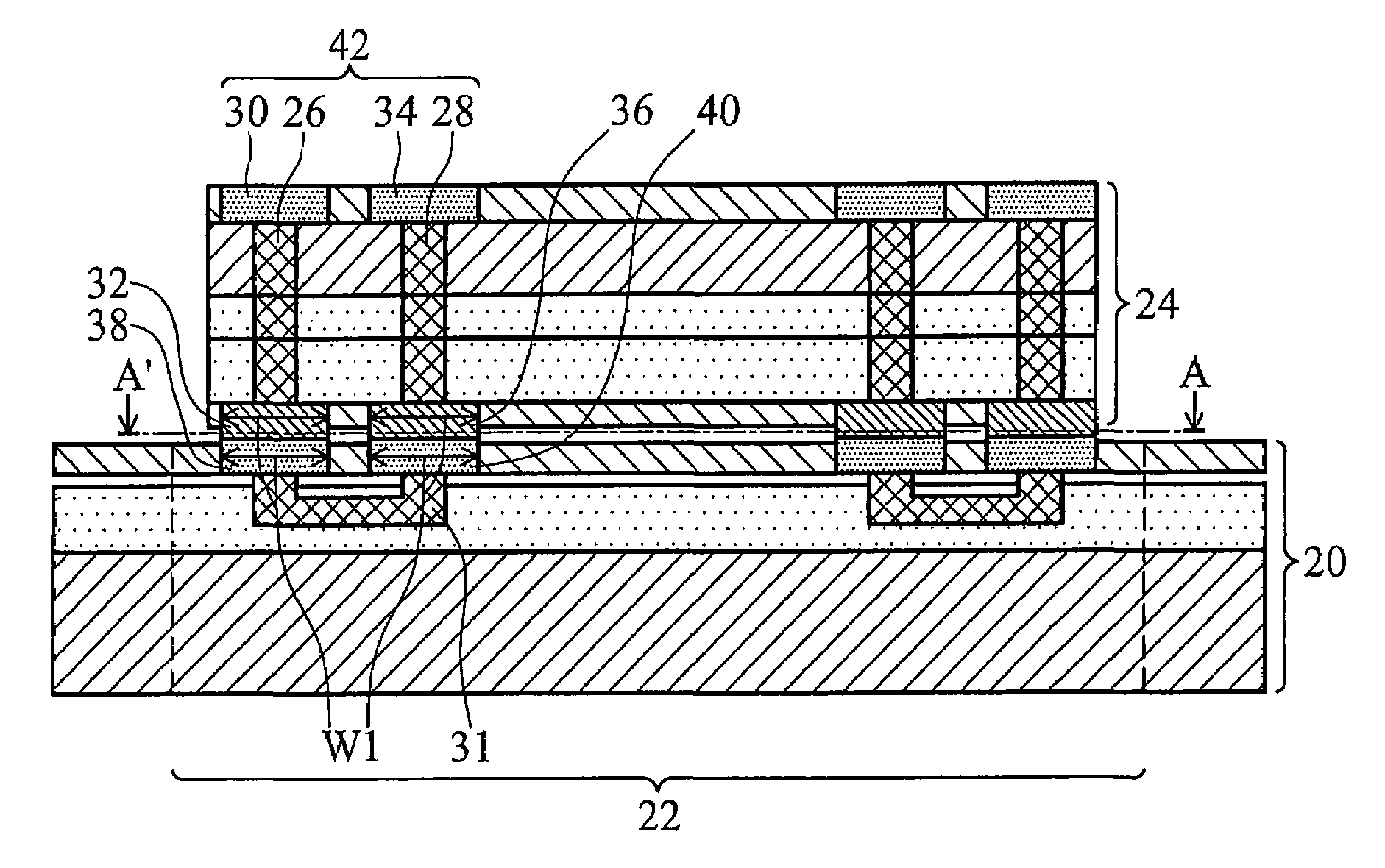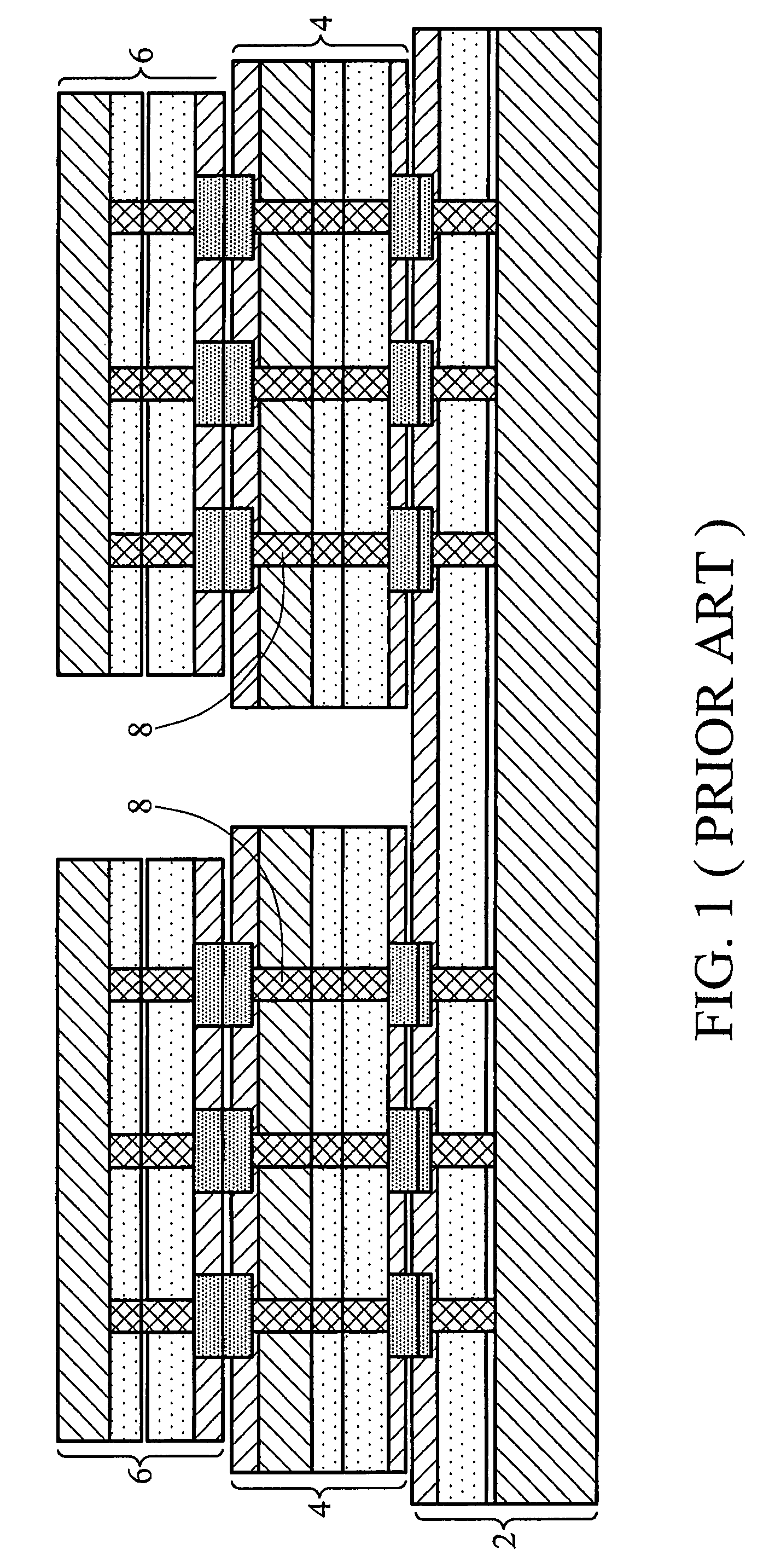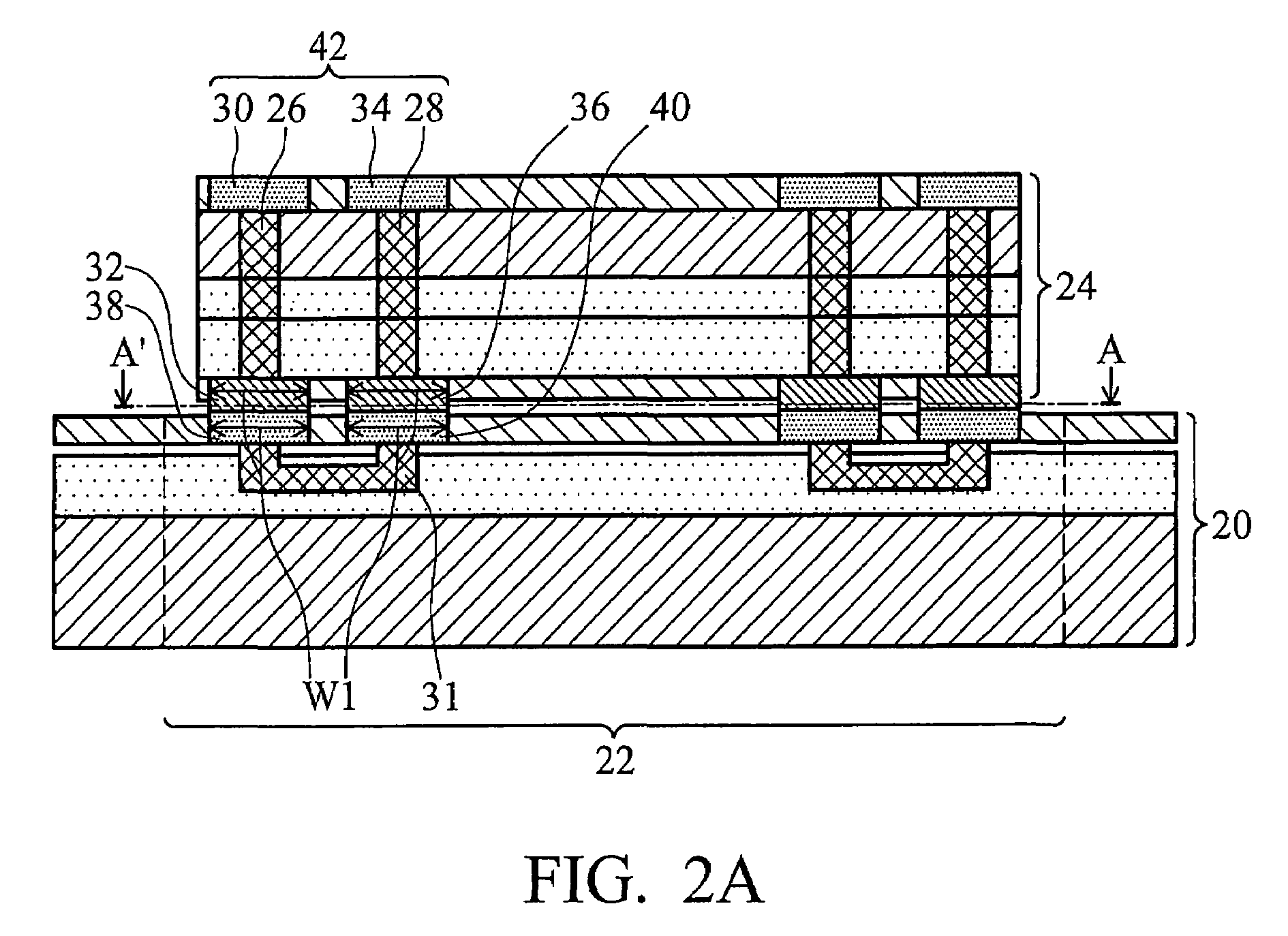Test structures for stacking dies having through-silicon vias
a technology of silicon vias and test structures, which is applied in the direction of semiconductor/solid-state device testing/measurement, semiconductor device details, semiconductor/solid-state device testing/measurement, etc., can solve the problem of reducing the size of the minimum required to make these components, requiring more complex designs, and physical limitations of the density that can be achieved in two dimensions, etc. problem, to achieve the effect of reducing the complexity of the probing process and increasing the ability to d
- Summary
- Abstract
- Description
- Claims
- Application Information
AI Technical Summary
Benefits of technology
Problems solved by technology
Method used
Image
Examples
Embodiment Construction
[0021]The making and using of the presently preferred embodiments are discussed in detail below. It should be appreciated, however, that the present invention provides many applicable inventive concepts that can be embodied in a wide variety of specific contexts. The specific embodiments discussed are merely illustrative of specific ways to make and use the invention, and do not limit the scope of the invention.
[0022]Typically, before bonding dies and / or wafers, dies on wafers are probed and sorted. Dies designated to be bonded with wafers are also probed and sorted. Only dies passing the probing process are bonded onto the wafers. If some dies on wafers do not pass the probing process, dummy dies will be bonded on the problematic dies on wafers. Therefore, the dies that are bonded and probed (except dummy dies) after stacking are known-good-dies. It can thus be reasonably expected that the stacked dies will function correctly if the stacking process is performed without any misalig...
PUM
 Login to View More
Login to View More Abstract
Description
Claims
Application Information
 Login to View More
Login to View More - R&D
- Intellectual Property
- Life Sciences
- Materials
- Tech Scout
- Unparalleled Data Quality
- Higher Quality Content
- 60% Fewer Hallucinations
Browse by: Latest US Patents, China's latest patents, Technical Efficacy Thesaurus, Application Domain, Technology Topic, Popular Technical Reports.
© 2025 PatSnap. All rights reserved.Legal|Privacy policy|Modern Slavery Act Transparency Statement|Sitemap|About US| Contact US: help@patsnap.com



